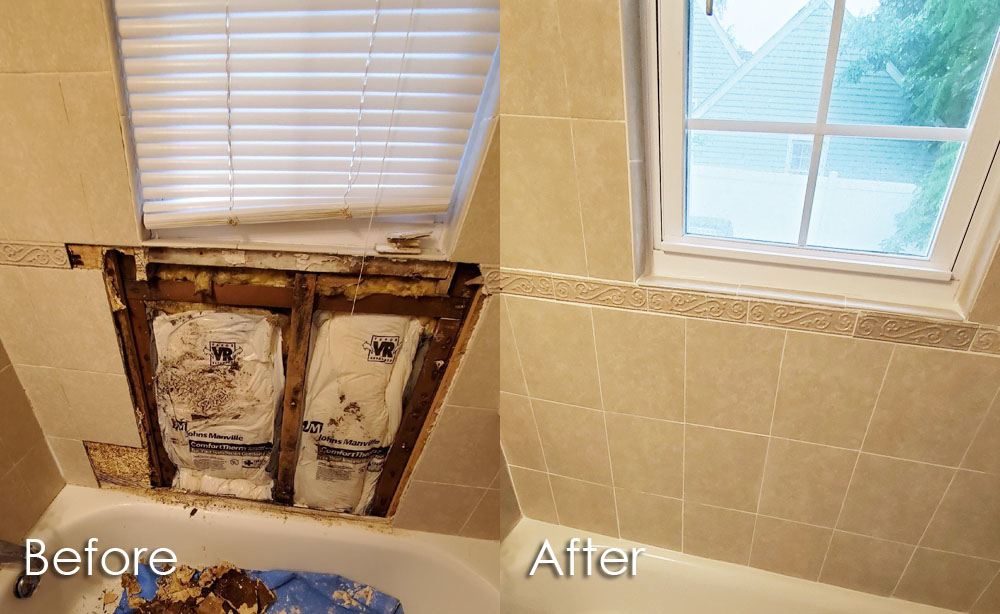Just how do you actually feel in relation to How to Prevent Bathroom Water Damage?

The washroom is incredibly prone for wet buildup and also possible water damages as a result of the constant use water in it. This write-up supplies straightforward examination strategies to aid identifying water damages dangers.
The regular use of water in the restroom makes it incredibly susceptible for damp accumulation and potential water damages. By evaluating it consistently, you can lower water relevant problems.
The complying with set of evaluations is very easy to execute as well as ought to be done once in every three months in order to maintain your shower room in good shape and to stop possible water problems brought on by the bath tub, the shower, pipe joints and plumbing, sinks, cabinets, and the toilet
Do not overlook carrying out these evaluations and be comprehensive while performing them. Bear in mind that these easy inspections can save you a lot of money by offering early indicators for water damage
Tub as well as Shower
The shower and bathtub require special focus and also upkeep. Examine the ceramic tiles as well as change if fractured. See to it that there is no missing out on cement in between the tiles. Evaluate as well as replace cracked caulking at joints where the wall surfaces satisfy the floor or the bath tub. Blocked drains and pipelines issues will protect against the tub from drying and also might indicate significant issues below the bath tub. Talk to a professional immediately to stop structural damage. Pay attention to discolorations or soft locations around the bathtub walls as they might indicate an interior leakage.
Plumbing
Signs for water damage are difficult to find since a lot of pipelines are mounted inside the walls.
Pay special focus to flooring and also walls wetness and also stains as they may suggest an unseen plumbing problem. Check dampness levels in adjacent rooms also.
Sinks as well as Cabinets
Sinks and cupboards are revealed to wetness and humidity daily as well as are frequently ignored. Examine regularly under the sink and also on the countertop over it. Repair any kind of drip in the trap as it might suggest drainpipe issues. Check out the sink, sluggish draining pipelines might suggest an obstructed drain. Change sink seals if they are broken or loosened.
The Toilet
The commode is a prone water junction. Inspect the water lines and also search for leakages around the toilet seat, in the pipe, and under the water storage tank. If you detect any type of indicators of moisture on the flooring around the commode, check for leakages in the toilet rim as well as container seals.
Be aware that hanging bathroom dish deodorants boosts the chances for blockages.
Water Damage Signs In The Bathroom To Avoid Cleanup
Musty smell
This is one of the easiest signs to catch because musty smells are so odorous. The damp, earthy, moldy smell should be a big red flag. The smell will develop when moisture gets trapped in surfaces, and begins to facilitate mold growth. Leaking pipes under cabinets, inside walls, and behind shower fixtures will cause moisture to stay trapped and not dry, which will lead to mold growth and spread. As soon as you notice any musty smells in your bathroom, have it checked for hidden water damage and cleanup signs.
Visible mold
If the smell isn’t there to give it away, sometimes you will actually see mold growth. Finding mold in your bathroom is a serious problem, because mold is very harmful to your health. By the time mold growth is visible, it also means that water damage has already occurred and been present for some time. The only way the mold problem can be resolved is to find the source of the moisture and get it stopped. To safely and adequately remove mold, you need to have professionals handle the remediation. Do not waste any time in getting mold problems addressed, fixed, and sanitized so that you can protect you and your family from the many respiratory symptoms caused by mold exposure.
Damaged floors
Bathroom floors should be able to withstand some exposure to water while still remaining in good condition. However, when excess exposure or water leaks occur, they will begin to damage even the most water-resistant flooring. If you notice any cracking, bubbling, staining, or warping on your bathroom floors, there is probably a water leak somewhere causing the distortion. If you notice areas of the floor have become softer, or even have a spongy feeling, there is probably damage to the subfloor. Subflooring is typically made up of plywood. When plywood is exposed to water or moisture, it will absorb it. Once it has become saturated, the weight of the excess water will cause the wood to swell and soften. Check the floors in your bathroom frequently to catch any of these sings before they lead to damaged subflooring.
Changes on walls
When water leaks behind walls, it will cause changes in the drywall. Peeling plaster, blistering paint, and soggy wallpaper are all good indicators that excess water is building up behind the wall. Water leaking behind drywall will cause it to swell and be soft to the tough. If you start to notice gaps along the trim of your walls, or where tile meets the wall, it could also be a strong indicator that there is a leak behind the wall. Any changes, distortion, or damage on the walls should be evaluated as soon as you notice it to prevent further water damage and cleanup.

I am very drawn to How to Repair and Prevent Bathroom Water Damage and I really hope you liked the blog post. Do you know about somebody else who is occupied with How to Fix a Water Damage Bathroom? Please feel free to share it. Thank you so much for taking the time to read it.
Recurring Service Plans